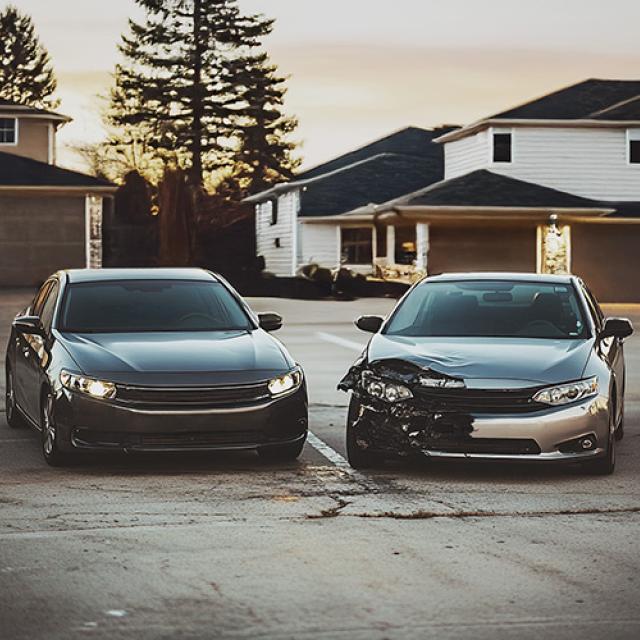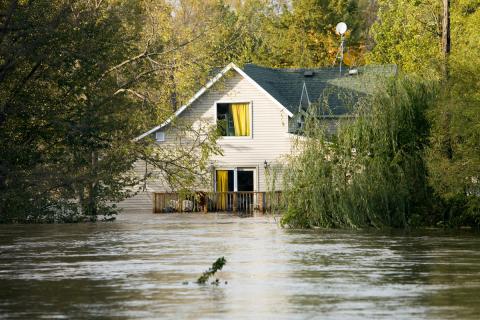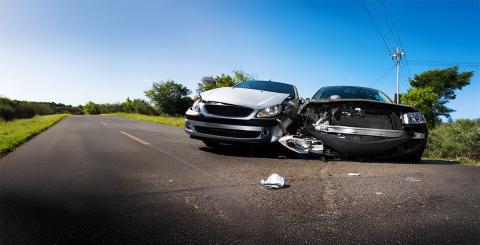What does one-way car insurance mean?

When it comes to car insurance, who is protected by “one-way insurance”? You as the owner of your car? The owner of the other car in case of an accident? Your fairy godmother? (Hint: it’s not your fairy godmother.) It’s important to sort this out, because choosing one-way or two-way insurance has a real impact on your coverage.
To help you understand this expression and make an informed decision, here are the answers to five frequently asked questions about car insurance.

Is it mandatory to be insured in Quebec?
Yes, third party liability insurance is mandatory for any owner of a vehicle driven in Quebec. It’s what we call Section A. Note that a vehicle in storage is not subject to this requirement.
Third party liability insurance comes into play when an insured person is civilly liable for property damage or bodily injury to another person caused by an insured vehicle. For example, this insurance would cover damage to a neighbour’s garage caused by you backing up into it without looking. What about damage to your car? It depends on which “way” you’re insured! (More on this later.)
However, some damages are not covered by liability insurance. This is the case if your windshield is cracked by a pebble on the highway, or if your roof is damaged by a branch that breaks in a strong gust of wind.
Generally, the amount of liability insurance is $1 million. If you often travel outside Quebec, your damage insurance representative may advise you to increase this amount to $2 million.
What does “one-way insurance” mean?
Since being insured is compulsory, it may be tempting to choose the least expensive option, namely only liability insurance. This is called “one-way insurance.” However, this type of insurance doesn’t cover damage to your vehicle, unless the direct compensation agreement applies in the event of a no-fault accident. This is the cheapest option as it offers the least protection.
If your car is old and worthless or your budget is limited, this is probably the choice you will be tempted to make. But in both cases, you have to be prepared to pay for your own car repairs— if it can be fixed! If your car is declared a total loss as a result of an accident or a disaster such as a fire, you would lose your means of getting around, without compensation.
So, before making a decision, think about the benefits of comprehensive coverage.
Why take out “two-way insurance”?
The main advantage of two-way insurance for your vehicle is that not only your civil liability (damage to others, such as a broken fence) but also damage to your vehicle are covered. This broader insurance contract, also known as Section B insurance, may contain several types of coverage:
- All perils
- Collision and overturning
- All perils other than collision and overturning
- Specified perils
Whether you choose “one-way” or “two-way” insurance will depend on several factors, such as whether you bought your car on credit or are leasing it, whether it is new or used, etc. Note that creditors and leasers usually require coverage for damage to the insured vehicles, i.e. Section B or “two-way” insurance.
What does car insurance cover?
To answer the question, let’s take four common situations and see what is covered in the event of an accident and by which type of insurance. Certain conditions, limitations, and exclusions may apply.
- Someone bangs into your car in the parking lot while you're in the grocery store
Parking lot collisions are common and always unpleasant incidents. Since it is the insurer that determines liability for the accident based on the information provided, be sure to supply as many details as possible to obtain a reliable and informed decision. The situation can quickly become complicated in such cases. However, if you’ve taken out “All perils” or “All perils, collision and overturning” insurance, you will be covered regardless of whether the accident is your fault or not. - You cause an accident after running a red light while distracted
If you are responsible for an accident caused by running a red light and you have only one-way insurance, the damage to your car will not be covered. However, if you have chosen all perils or collision and overturning coverage, your insurer will compensate you for damage to your vehicle, subject to the deductible in the policy, if applicable. An animal suddenly appears in front of your vehicle and you can’t avoid it
Hitting an animal is a terrible experience. Once you’ve made sure the passengers in your car are safe and you’ve calmed down, you’ll want to know if the damage will be covered. Again, this will depend on the coverage you’ve chosen. Remember, if the animal weighs more than 25 kg, you must report the accident to the nearest police station.Finally, if you were injured in the accident, Quebec’s public automobile insurance plan will compensate you, whether or not you are held responsible and regardless of your insurance policy.
- A basketball bounces on your parked car
If an object falls on it, damage to your vehicle is covered when your insurance policy includes all perils except collision and overturning coverage.
Do you feel you need additional coverage? Consider including endorsements.
What are endorsements for?
An endorsement is a document that amends your insurance policy to add coverage. In car insurance, it is officially called the “Québec Endorsement Form,” or Q.E.F. An endorsement can cover:
- The cost of renting a car at no extra cost if your car has suffered a covered loss
- Damage to a rental or borrowed car due to an accident for which you are liable, if you are in the United States or Canada.
Still have questions? Think you need more coverage? Promutuel is THERE to answer your car insurance questions and determine if your needs are properly met. Contact one of our expert advisors before heading out! a few minutes today can save you a lot of headaches in the future!



